
Keywords: containment

|
Proposed Changes to the NIH Guidelines for Research Involving Recombinant or Synthetic Nucleic Acid Molecules (NIH Guidelines)National Institutes of Health, Federal Register, 2023.
The National Institutes of Health (NIH) seeks input on a proposal to revise the NIH Guidelines for Research Involving Recombinant or Synthetic Nucleic Acid Molecules (NIH Guidelines) to include specific considerations and requirements for conducting research involving gene drive ... Keywords: containment, gene drive synthetic, genetically engineered mosquitoes, mosquito, policy, regulation, safety |

|
Rescue by gene swamping as a gene drive deployment strategyK. D. Harris and G. Greenbaum, bioRxiv, 2022.03.08.483503. 2022.
Gene drives are genetic constructs that can spread deleterious alleles with potential application to population suppression of harmful species. Given that a gene drive can potentially spill over to other populations or even other species, control measures and fail-safes ... Keywords: containment, gene drive synthetic, genetically engineered mosquitoes, mosquito, policy, regulation, safety |

|
Engineering stringent genetic biocontainment of yeast with a protein stability switchS. A. Hoffmann and Y. Cai, bioRxiv, 2022.11.24.517818. 2022.
Synthetic biology holds immense promise to tackle key problems we are facing, for instance in resource use, environmental health, and human health care. However, comprehensive safety measures are needed to deploy genetically engineered microorganisms in open-environment ... Keywords: containment, gene drive synthetic, genetically engineered mosquitoes, mosquito, policy, regulation, safety |
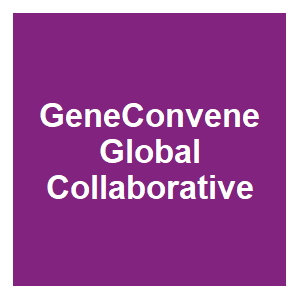
|
Laboratory Containment of Arthropods Capable of Gene Drive: Best Practices and RecommendationsHector Quemada, GeneConvene Global Collaborative, 2022.
This webinar is presented by members of the American Society of Tropical Medicine and Hygiene's American Committee of Medical Entomologists who were involved in drafting a recent Addendum to the ASTMH's Arthropod Containment Guidelines that specifically consider arthropods with ... Keywords: containment, gene drive synthetic, genetically engineered mosquitoes, mosquito, policy, regulation, safety |
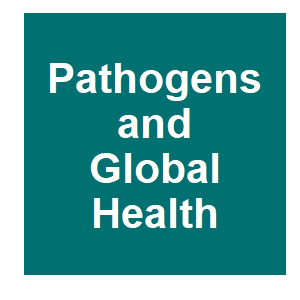
|
Infravec2 guidelines for the design and operation of containment level 2 and 3 insectaries in EuropeE. Pondeville, A.-B. Failloux, F. Simard, P. Volf, A. Crisanti, R. E. Haghighat-Khah, N. Busquets, F. X. Abad, A. J. Wilson, R. Bellini, S. Marsh Arnaud, A. Kohl and E. Veronesi, Pathogens and Global Health, 2022.
ABSTRACTWith the current expansion of vector-based research and an increasing number of facilities rearing arthropod vectors and infecting them with pathogens, common measures for containment of arthropods as well as manipulation of pathogens are becoming essential for the design ... Keywords: containment, gene drive synthetic, genetically engineered mosquitoes, mosquito, policy, regulation, safety |
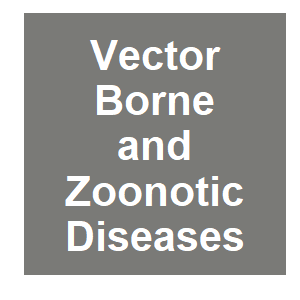
|
An Introduction to Containment Recommendations for Gene Drive Mosquitoes and the Laboratory Rearing of Genetically Engineered Mosquitoes in AfricaS. Higgs, Vector-Borne and Zoonotic Diseases, 2022.
The prospect of using genetically engineered arthropods to reduce the incidence of vector-borne diseases either indirectly by suppressing vector populations or directly by replacing wild-type vector species with less competent ones has long been discussed; however, only in the ... Keywords: containment, gene drive synthetic, genetically engineered mosquitoes, mosquito, policy, regulation, safety |

|
Preparing an Insectary in Burkina Faso to Support Research in Genetic Technologies for Malaria ControlC. Guissou, M. M. Quinlan, R. Sanou, R. K. Ouédraogo, M. Namountougou and A. Diabaté, Vector-Borne and Zoonotic Diseases, 2022.
The Institut de Recherche en Sciences de la Santé (IRSS) of Burkina Faso, West Africa, was the first African institution to import transgenic mosquitoes for research purposes. A shift from the culture of mosquito research to regulated biotechnology research and considerable ... Keywords: containment, gene drive synthetic, genetically engineered mosquitoes, mosquito, policy, regulation, safety |
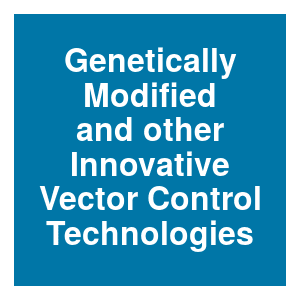
|
Laboratory Biosafety in Handling Genetically Modified MosquitoesJ. Charles, Genetically Modified and other Innovative Vector Control Technologies, 2021.
One of the novel approaches in controlling vector-borne diseases is to release genetically modified mosquitoes in nature. Trial studies are done in different phases by the researches, both in the laboratory and in the fields. Before a GM mosquito is validated to be ready for ... Keywords: containment, gene drive synthetic, genetically engineered mosquitoes, mosquito, policy, regulation, safety |

|
New Arthropod Containment Recommendations Provide Essential Guidance for Safety of Gene Drive ResearchS. James and D. O’Brochta, The American Journal of Tropical Medicine and Hygiene, tpmd211148. 2021.
Gene drive technologies have not yet been field tested, however, there are no data on the possible environmental or health effects of releasing gene drive–modified organisms. For this reason, there have been widespread calls for additional guidance on risk assessment and ... Keywords: containment, gene drive synthetic, genetically engineered mosquitoes, mosquito, policy, regulation, safety |

|
Containment Practices for Arthropods Modified with Engineered Transgenes Capable of Gene Drive Addendum 1 to the Arthropod Containment Guidelines, Version 3.2American Committee of Medical Entomology, Vector-Borne and Zoonotic Diseases, 2021.
Responsible conduct of research is a cornerstone of rigorous scientific discovery. Institutional committees, independent advisory panels, and expert steering groups are among the frameworks in academia meant to provide guidance and assurances that research activities do not ... Keywords: containment, gene drive synthetic, genetically engineered mosquitoes, mosquito, policy, regulation, safety |

|
Double drives and private alleles for localised population genetic controlK. Willis and A. Burt, PLOS Genetics, 17. 2021.
ynthetic gene drive systems that are able to spread though populations because they are inherited at a greater-than-Mendelian rate have the potential to form the basis for new, highly efficient pest control measures. The most efficient such strategies use natural gene flow to ... Keywords: containment, gene drive synthetic, genetically engineered mosquitoes, mosquito, policy, regulation, safety |

|
Population genomics of invasive rodents on islands: Genetic consequences of colonization and prospects for localized synthetic gene driveK. P. Oh, A. B. Shiels, L. Shiels, D. V. Blondel, K. J. Campbell, J. R. Saah, A. L. Lloyd, P. Q. Thomas, F. Gould, Z. Abdo, J. R. Godwin and A. J. Piaggio, Evolutionary Applications, 2021.
Here we used pooled whole-genome sequencing of invasive mouse (Mus musculus) populations on four islands along with paired putative source populations to test genetic predictions of island colonization and characterize locally fixed Cas9 genomic targets. Patterns of variation ... Keywords: containment, gene drive synthetic, genetically engineered mosquitoes, mosquito, policy, regulation, safety |

|
Double drives and private alleles for localised population genetic controlK. Willis and A. Burt, bioRxiv, 2021.01.08.425856. 2021.
In this paper we propose and model a series of low threshold double drive designs for population suppression, each consisting of two constructs, one imposing a reproductive load on the population and the other inserted into a differentiated locus and controlling the drive of the ... Keywords: containment, gene drive synthetic, genetically engineered mosquitoes, mosquito, policy, regulation, safety |

|
Demystifying the Risk Assessment Process for Laboratory-Based Experiments Utilizing Invasive Genetic Elements: It Is More Than Gene DriveZ. N. Adelman, Applied Biosafety, 2021.
Advances in recombinant DNA approaches have resulted in the development of transgene architectures that severely bias their own inheritance, a process commonly referred to as ?gene drive.? The rapid pace of development, combined with the complexity of many gene drive approaches, ... Keywords: containment, gene drive synthetic, genetically engineered mosquitoes, mosquito, policy, regulation, safety |
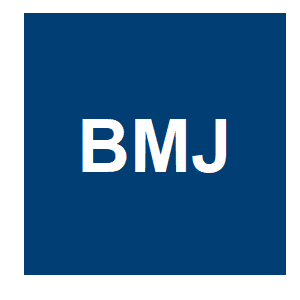
|
Fighting malaria with genetically modified mosquitoesE. Nakkazi, BMJ, 370:m2172. 2020.
Could a bold project to genetically engineer mosquitoes curb the scourge of malaria in Africa? Finding out will require careful science—and public acceptance, writes Esther Nakkazi Keywords: containment, gene drive synthetic, genetically engineered mosquitoes, mosquito, policy, regulation, safety |
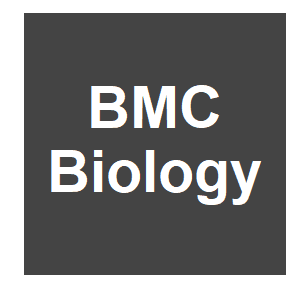
|
Modeling confinement and reversibility of threshold-dependent gene drive systems in spatially-explicit Aedes aegypti populationsH. M. Sánchez C, J. B. Bennett, S. L. Wu, G. Rašić, O. S. Akbari and J. M. Marshall, BMC Biology, 18:50. 2020.
Here, we model hypothetical releases of two recently engineered threshold-dependent gene drive systems—reciprocal chromosomal translocations and a form of toxin-antidote-based underdominance known as UDMEL—to explore their ability to be confined and remediated. Keywords: containment, gene drive synthetic, genetically engineered mosquitoes, mosquito, policy, regulation, safety |

|
Guidance for IBCs: Regulatory requirements for contained research with GMOs containing engineered gene drivesOffice of the Gene Technology Regulator, Australian Government, Department of Health, 2019.
This document provides guidance for Institutional Biosafety Committees (IBCs) and researchers on the regulatory requirements for organisms containing engineered ‘gene drives’, including the physical containment (PC) level of facilities for notifiable low risk dealings ... Keywords: containment, gene drive synthetic, genetically engineered mosquitoes, mosquito, policy, regulation, safety |

|
Developing standard operating procedures for gene drive research in disease vector mosquitoesZ. N. Adelman, D. Pledger and K. M. Myles, Pathogens and Global Health, 111:436-447. 2018.
Here we discuss information to be considered by principal investigators, biosafety officers, and institutional biosafety committees as they work together to develop SOPs for experiments involving gene drive in arthropods, and describe various courses of action that can be used ... Keywords: containment, gene drive synthetic, genetically engineered mosquitoes, mosquito, policy, regulation, safety |

|
Guidance framework for testing of genetically modified mosquitoesWHO, WHO-TDR, 2014.
As the research progresses, a need has been expressed both within the scientific community and by the public for additional standards and guidance. WHO-TDR and the Foundation for the National Institutes of Health (FNIH) co-sponsored a technical consultation meeting in 2009 to ... Keywords: containment, gene drive synthetic, genetically engineered mosquitoes, mosquito, policy, regulation, safety |

|
Directive 2009/41/EC of the European Parliament and of the Council of 6 May 2009 on the contained use of genetically modified micro-organisms (Recast) (1)European Parliament,, Official Journal of the European Union L 125, 52:75. 2009.
Whereas: (1 )Council Directive 90/219/EEC of 23 April 1990 on the contained use of genetically modified micro-organisms (3) has been substantially amended several times (4). Since further amendments are to be made, it should be recast in the interests of clarity. (2) Under ... Keywords: containment, gene drive synthetic, genetically engineered mosquitoes, mosquito, policy, regulation, safety |

Contact
David O’Brochta
Foundation for the
National Institutes of Health
geneconvenevi@fnih.org
RSS

